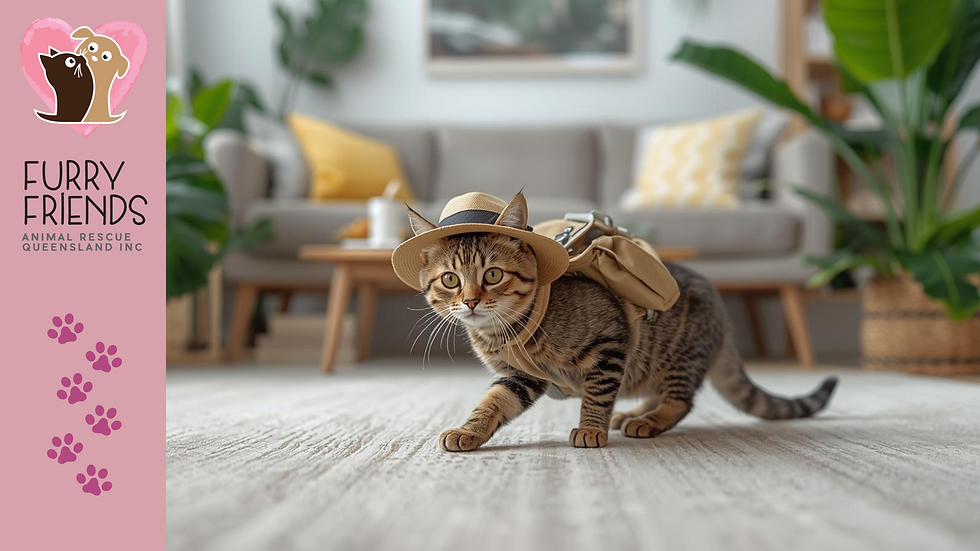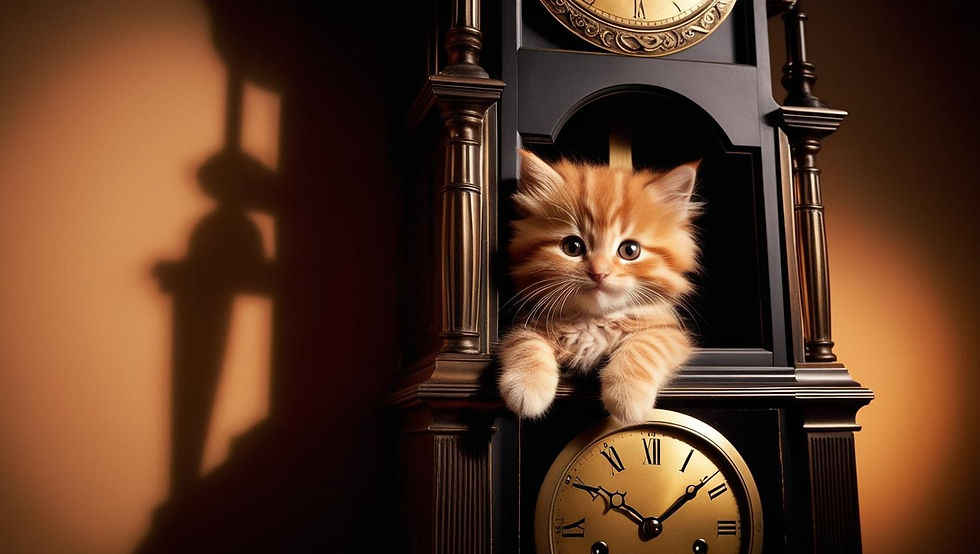Why Do Cats Love Exploring
- Ray Duck

- Aug 29
- 3 min read

Introduction
Cats are not just pets; they are natural explorers. Their playful antics and inquisitive behaviour lead them to uncover every corner of their environment. This deep-rooted curiosity is more than a quirky trait, it's essential for their well-being. By understanding why cats love to explore, owners can create enriching experiences that enhance their feline friends' lives.
The Instinctual Drive to Explore
Cats are instinctive hunters, fuelled by a powerful drive to explore. In the wild, a cat's survival hinges on its ability to hunt and stay safe from predators. For example, a study found that about 75% of a wild cat's day is spent hunting or foraging. This instinct to explore helps them know their surroundings, find food, and identify safe hiding spots. Even house cats retain this drive, making it crucial for owners to provide an environment that satisfies their exploration needs.

The Role of Curiosity in Cat Behaviour
Curiosity is a defining trait in cats. It's often said that "curiosity killed the cat," but this curiosity is what keeps them engaged and mentally active. When cats explore, they aren’t just searching for food; they are on a quest for new experiences. Research shows that cats that engage in regular playful exploration display less stress and show improved mental health. Simple toys, scratching posts, and interesting scents can lead to play and exercise—two essential components for a cat's happiness.
Environmental Enrichment and Exploration
Creating an environment that encourages exploration is vital for a cat's happiness. Cats thrive in spaces filled with different textures, heights, and hiding spots. Cat trees adorned with multiple levels can attract exploration, offering climbing opportunities similar to their natural habitats. A well-designed cat environment can increase activity levels by up to 50%. Interactive toys that dispense treats or respond to a cat's movements can significantly stimulate their curiosity, leading them to explore even more.

The Importance of Scent
Cats depend heavily on their remarkable sense of smell, which plays a huge role in their exploration. Their noses contain around 200 million scent receptors, compared to a human’s 5 million. With such a powerful sense of smell, a cat can pick up on scents that lead them to food or other animals. For example, when introducing new items into the home or rearranging furniture, the enticing new scents can ignite a cat's interest and encourage thorough exploration.
Social Exploration
Although cats are often perceived as solitary creatures, they also engage in social exploration. They explore new areas to interact with other pets and humans. This social aspect is especially important for indoor cats, which may have fewer opportunities to meet other animals. A study revealed that cats that regularly interact with humans and other pets exhibit more exploratory behaviour. Facilitating safe interactions can enrich their lives, giving them a chance to explore not just their environments, but also their social instincts.
The Impact of Age on Exploration
Age affects a cat's desire to explore. Kittens are naturally curious and adventurous, often getting into anything within reach. Research indicates that kittens are not only twice as likely to explore compared to adult cats but also spend 50% more time engaging with new objects. As cats age, their energy tends to wane, and they might become less inclined to explore. However, older cats still benefit from exploration. Introducing gentle stimulation, such as soft toys or low-impact play, can keep them both mentally and physically active.

Safety Considerations for Exploration
While exploration is crucial, safety must also be a priority. Owners should ensure homes are safe by eliminating hazardous items and securing windows and balconies. According to the American Society for the Prevention of Cruelty to Animals (ASPCA), hundreds of cats are injured or lost each year due to unsafe explorations. When venturing outdoors, supervision is essential, or consider creating a secure environment like a catio, which protects them while allowing for safe exploration.
Final Thoughts
The love for exploration is an intrinsic part of a cat's nature. Recognizing their need for curiosity allows owners to create an enriching environment tailored to their feline friends. Whether through engaging play, safe exploration spaces, or social interactions, nurturing a cat's exploratory instincts leads to a happier, healthier life. Celebrate the curious nature of your cat, and enjoy watching them thrive in an environment that supports their adventurous spirit.

If you are interested in adopting a Furry Friend you can view our Adoptables here
If you are interested in Fostering a Furry Friend, please visit this page on our Website for more information, and complete the Foster Application Form.
If you cannot Foster but would like to help, you can Buy Supplies for Us
or just give a Donation.


